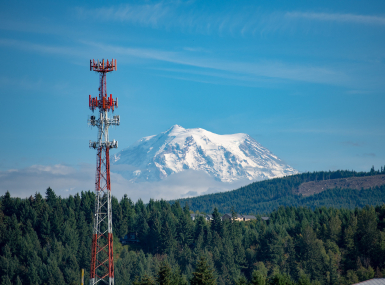Shared costs make broadband happen

Key Takeaways
While he wrote that no man is an island, poet John Donne never had to develop an economy in San Juan County, Wash.
The archipelago south of Vancouver, B.C. is in the process of building out high speed internet access that could transform the county thanks to its power cooperative. The county, reachable primarily by ferry, is now primed to support business that relies on information exchange.
“As a community consisting of islands, we don’t have much of an economic base outside of construction and tourism,” said Commissioner Rick Hughes. “This allows us to have people who want to have a lifestyle change live in our community and have a better connection.”
Learn More
The last six years have been an epic poem as the county’s nearly 17,000 residents have fought against for-profit internet service provider CenturyLink.
“We’re in the middle of nowhere,” Hughes said. “Everyone was fed up paying whatever they were to CL link supposedly getting 10 MB and getting 1.5, and meanwhile their broadband maps blocked us out of all the FCC money because they said they had adequate coverage for rural broadband, but they really didn’t.”
Piggybacking on the Bonneville Power Administration’s underwater cables that brings electricity to the 20 islands that make up the county, the Orcas Power & Light Cooperative’s (OPALCO) Rock Island Communications subsidiary runs fiber optic cable to the islands from the mainland.
OPALCO owns the fiber backbone and Rock Island owns the distribution and wireless sites. A report by the National Rural Electric Cooperative Association cites Rock Island’s capital costs as $25 million with projected annual operating costs of $3 million to $6 million by 2022.
“BPA would go into communities that private businesses wouldn’t because the cost was too prohibitive,” Hughes said. “Big internet service providers wouldn’t see the business sense in connecting us to broadband.”
With a connection now available on the islands, homeowners associations — or “fiberhoods” — pay the “middle mile” construction costs and individual homeowners pay the “last mile,” with a $1,500 incentive for each house from Rock Island, which outsources the build-out costs to customers, but also encourages more customers to pay in to decrease the cost to the “fiberhoods.” The NRECA report quotes Rock Island as predicting that at least 60 percent of the households in the county will opt in.
“It makes it easy if you work within the power company’s existing easements to put multiple-layered systems at the top of the pole with a very limited permit project,” Hughes said. “They just needed an engineering permit.”
The effect has been dramatic.
“Before, you could not drive from the ferry to my house without losing cell coverage,” Hughes said. “Now you can suck data the whole way down.”
Communication dead zones drove the project in the first place, when an OPALCO lineman was seriously burned while working in the field and the rest of his crew had spotty cellular coverage. A catastrophic communications cable failure in 2013 interrupted all communication, including 911 service, for 10 days.
“This is going to change the way people work in San Juan County,” Hughes said. “It takes a certain kind of person to live on an island that’s served by ferries — they’re going to be isolated — but now we can provide modern conveniences and technology, it can allow us to bring different businesses here. I think we’ll see huge benefits as millennials change their career paths and think about where they want to live.”
It also provides some security and stability to be able to diversify the county’s economy.
“I have great concerns of what the next recession will bring us,” Hughes said, noting that roughly 400 families left the county at the end of the last decade. “This interconnecting provides a link and an economic safety net.”
Hughes makes the case that the cooperative approach that has worked in San Juan County can work in other rural areas.
“We have to push our state and federal legislators to wake up and stop listening to big corporations, listen to us when we tell you we need help,” he said.
“The big internet providers, yes they do have the market share, but they’re ignoring these communities, and rural communities are capable of great advances if people there have access to the information and communication to spread those ideas.
For-profit Rock Island benefits from its relatively quick ramp-up in revenues, which enables deployment of the full network incrementally, according to the NRECA report.
“Local, state and federal government should improve and should help fund this type of local infrastructure improvement,” Hughes said, if ‘fiberhoods’ can’t shoulder all the middle-mile costs. “If we didn’t have certain things lined up, we wouldn’t have this.
“We’re not asking for a handout, we’re looking for a way for us to make our opportunities happen.”

Attachments
Related News

House committee passes local broadband permitting preemption bills
The American Broadband Deployment Act of 2025 would enact new restrictions on a variety of state and local land use and zoning authorities pertaining to the deployment of telecommunications infrastructure.


